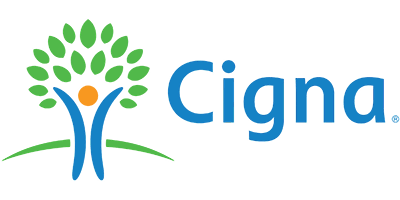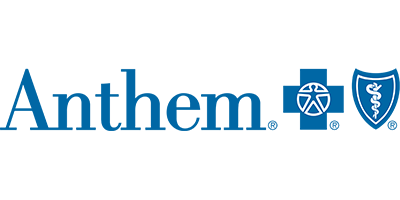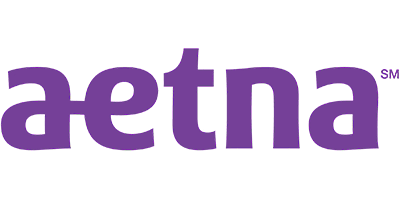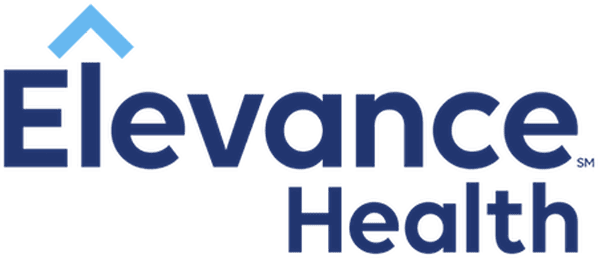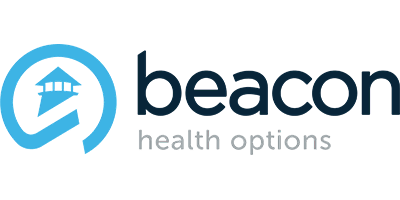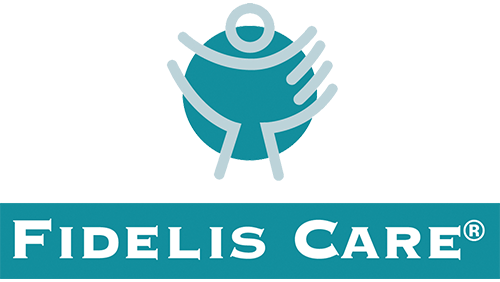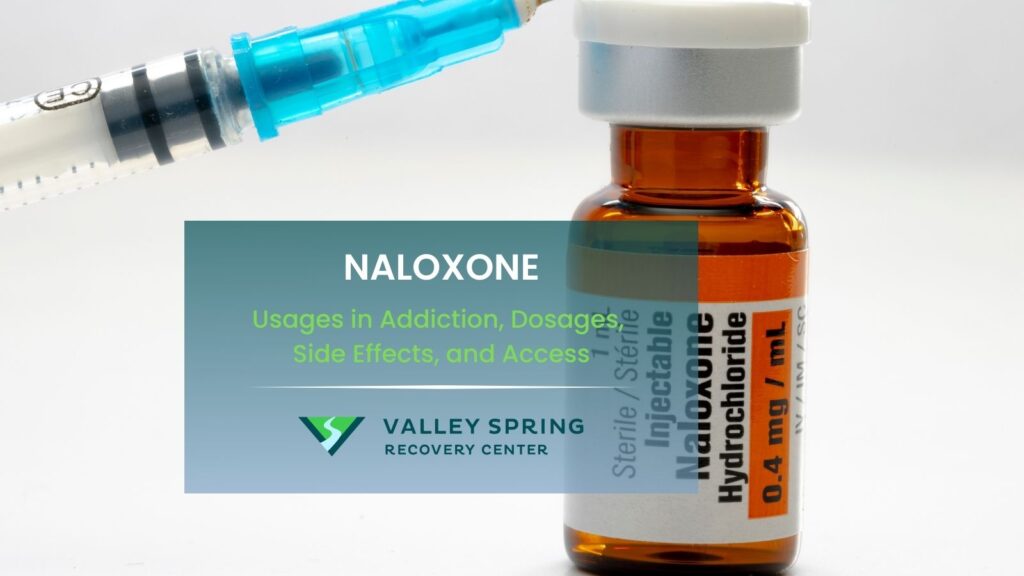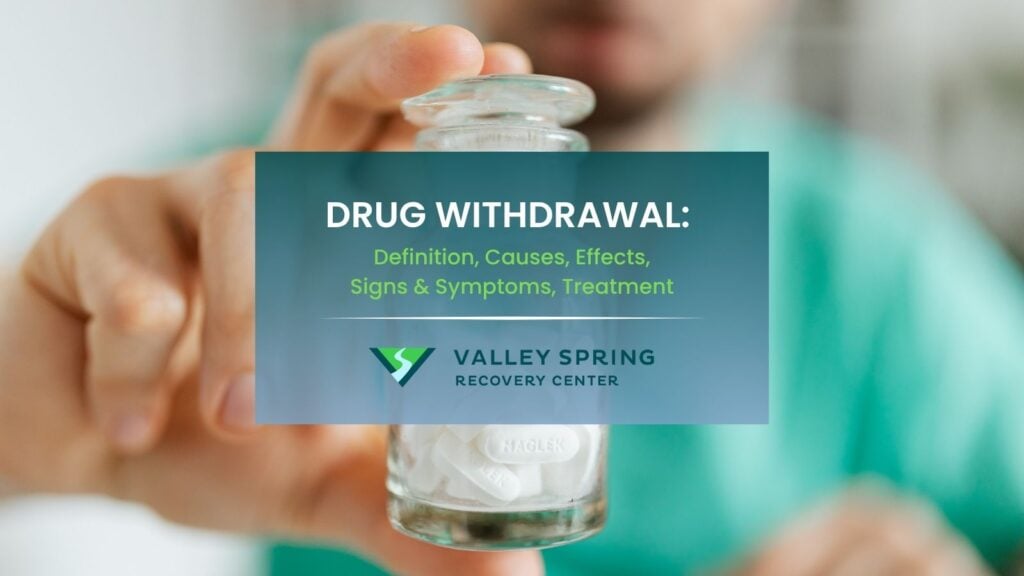Saliva (Oral Fluid) Drug Test: Definition, Usages, Benefits, and Limitations
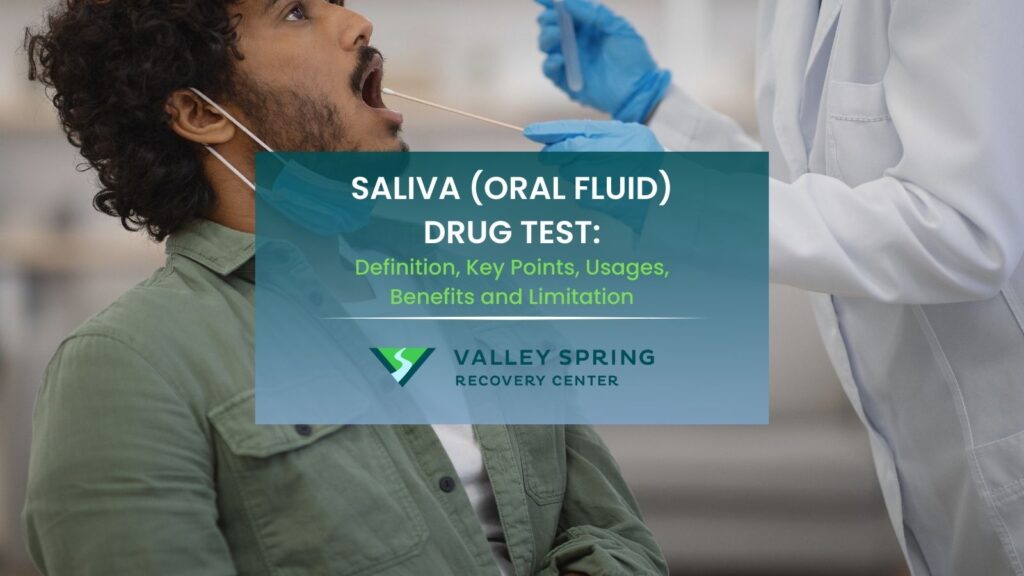
The saliva drug test, also known as oral fluid drug test, was invented in the 1980s as a non-invasive method of drug testing that detects recent drug use by analyzing drugs and their metabolites present in the oral fluid, making it convenient for various applications such as workplace testing, roadside testing, and rehabilitation programs.
The saliva drug test is used for detecting recent drug use in applications such as workplace testing, roadside testing, and rehabilitation programs.
The benefits of the saliva drug test include non-invasiveness, ease of sample collection, rapid results, and the ability to detect recent drug use.
The limitations of the saliva drug test include a shorter detection window, limited drug panel depending on the test, potential for false results, sensitivity to drug concentration, variability in individual response, and privacy concerns during sample collection.
What is the Saliva (Oral Fluid) Drug Test?
The saliva or oral fluid drug test is a method used to detect the presence of drugs in a person’s system. It involves collecting a sample of saliva, which is the watery fluid in your mouth, and then testing it for the presence of drugs or their metabolites (substances produced when drugs break down in the body).
The saliva drug test is popular because it is non-invasive, meaning it doesn’t require a needle or blood sample. It is also relatively quick and provides results within a short period, usually within a few minutes to a few days depending on the testing method used.
A study by Khazanov et al, titled Validity and reliability of in-person and remote oral fluids drug testing compared to urine drug testing revealed that saliva drug tests have good specificity, ranging from 0.93 to 1.00. The negative predictive value of saliva drug tests is also high, ranging from 0.85 to 1.00. However, the sensitivity and positive predictive value of saliva drug tests are lower compared to other testing methods.
Did you know most health insurance plans cover substance use disorder treatment? Check your coverage online now.
How is the Saliva Drug Test Administered?
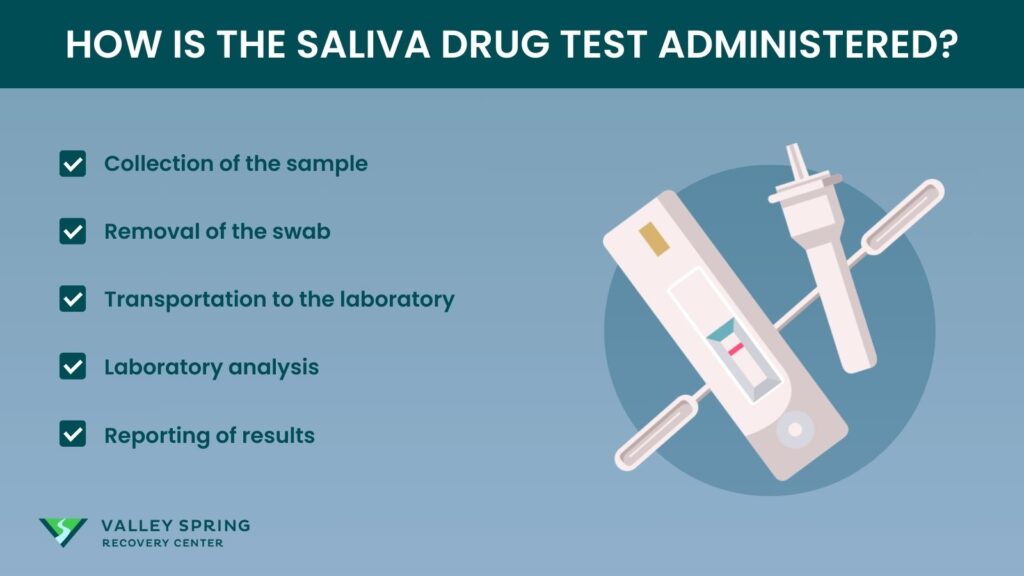
The saliva drug test is administered by following 5 simple steps. The sample is collected using a swab placed between the cheek and gums. Once saturated, the swab is removed and placed in a container. The sample is then sent to a lab for analysis using techniques like enzyme immunoassay or chromatography. Results are reported to the requester.
Here are the steps of saliva drug test administration:
- Collection of the sample: The person being tested will be provided with a collection device, typically a swab or sponge-like device. They will be instructed to place the swab between their lower cheek and gums and move it around gently to allow the saliva to saturate the swab. The swab is usually left in the mouth for a few minutes to ensure enough saliva is collected.
- Removal of the swab: Once the swab is saturated with saliva, it is removed from the person’s mouth. The swab may be placed into a collection container provided by the testing facility. It’s important to follow any instructions given regarding the proper handling of the swab and the container.
- Transportation to the laboratory: The collected saliva sample, usually in the container provided, is then transported to a laboratory for analysis. The container is typically sealed to prevent any tampering or contamination of the sample during transit.
- Laboratory analysis: In the laboratory, the saliva sample undergoes analysis to detect the presence of drugs or their metabolites. The specific testing method can vary, but it often involves using techniques such as enzyme immunoassay (EIA) or chromatography. These methods can identify the presence and concentration of specific drugs in the saliva sample.
- Reporting of results: Once the laboratory analysis is complete, the results are reported to the organization or individual who requested the test. The results will indicate whether drugs or their metabolites were detected in the saliva sample and, if so, which drugs were found. The turnaround time for receiving the results can vary depending on the testing facility and method used.
Note that the saliva drug test is generally a simple and non-invasive procedure that is performed without any specialized medical training. However, it’s essential to follow the instructions provided by the testing facility to ensure accurate and reliable results.
What Drugs Does the Saliva Drug Test Detect and What is the Detection Window?
The saliva drug test detects various substances, including cannabis, cocaine, opiates, amphetamines, and benzodiazepines. The detection window for these drugs typically ranges from a few hours to a few days, depending on the specific substance and individual factors.
The drugs that can be detected through a saliva drug test include:
- Marijuana (THC): The test detects the presence of THC (tetrahydrocannabinol), the primary psychoactive compound in marijuana. It indicates recent marijuana use, typically within a few hours to a few days.
- Cocaine: Swab tests detect cocaine and its metabolites, such as benzoylecgonine. It indicates recent cocaine use, typically within a few hours to a few days.
- amphetamines: The test detects drugs such as amphetamine and methamphetamine. It will indicate recent use of these stimulant drugs, typically within a few hours to a few days.
- Opioids: The saliva test detects opioids such as codeine, morphine, heroin, and oxycodone. It indicates recent opioid use, typically within a few hours to a few days.
- Benzodiazepines: The test detects drugs such as diazepam, alprazolam, and lorazepam, which are commonly prescribed for anxiety and sleep disorders. It can indicate recent benzodiazepine use, typically within a few hours to a few days.
- Phencyclidine (PCP): The test detects PCP, a hallucinogenic drug. It indicates recent PCP use, typically within a few hours to a few days.
The specific drugs detected may vary depending on the testing method and the panel of drugs included in the test. Additionally, the detection window for each drug will vary based on factors like drug potency, dosage, frequency of use, and individual metabolism.
How Accurate is the Saliva Drug Test?
Saliva drug tests are accurate for detecting recent drug use, but they are not 100% foolproof. False-positive and false-negative results can occur due to factors like cross-reactivity, contamination, or errors in the testing process. Proper collection and handling of the sample are crucial for accuracy.
According to research by Krotulski et al, titled Field Detection of Drugs of Abuse in Oral Fluid Using the Alere™ DDS®2 Mobile Test System with Confirmation by Liquid Chromatography Tandem Mass Spectrometry (LC–MS/MS), when conducted correctly, saliva drug tests have been reported to be more than 97% accurate. However, it is important to consider factors that can affect accuracy, such as the specific type of test, the drug being tested, the skill of the person conducting the test, and the testing facility.
Contact us today to schedule an initial assessment or to learn more about our services. Whether you are seeking intensive outpatient care or simply need guidance on your drug addiction journey, we are here to help.
What are the Benefits of the Saliva Drug Test?
The Benefits of the Saliva Drug Test include non-invasiveness, ease of administration, and rapid results. The test is non-invasive, ensuring comfort and convenience, and features a simple administration process that requires no specialized medical training. It provides quick results, allowing for timely decision-making.
See the benefits of the saliva drug test below:
- Non-Invasiveness: The saliva drug test is non-invasive. The test does not require needles or blood samples, ensuring comfort and convenience for individuals.
- Ease of Administration: The test features a simple administration process. It requires no specialized medical training and can occur almost anywhere, making it suitable for workplaces, schools, and various settings.
- Rapid Results: Saliva drug tests provide quick results, typically within minutes to a few days, depending on the testing method. This speed allows for timely decision-making and immediate actions, such as implementing workplace safety measures or determining eligibility for activities.
- Recent Drug Use Detection: Saliva drug tests effectively detect recent drug use. The tests identify drug use within a window of a few hours to a few days, making them suitable for assessing recent impairment and identifying safety risks.
- Deterrent Effect: Knowledge of saliva drug testing acts as a deterrent against drug use. The presence of testing discourages drug use in workplaces, schools, and other environments, promoting safety and health.
- Non-Invasive Monitoring: Saliva drug tests facilitate ongoing or random monitoring of drug use even after formal treatment ends, such as in an alumni program. The non-invasive nature allows for frequent or periodic testing in rehabilitation programs or workplace safety initiatives.
A systematic review by Nunes et al. (2015) discusses the latest trends in salivary research and its applications in health and disease. The review highlights the non-invasive, easy, and cost-effective collection methods of saliva and its potential utility in monitoring overall health, diagnosing various disorders, and drug monitoring.
What are the Limitations of the Saliva Drug Test?
The saliva drug test falls short in certain instances, including the following:
- Short detection window: Saliva tests detect recent drug use, but may not detect drug use further back in time.
- Limited drug panel: Some tests can only detect specific drugs, potentially missing others.
- Sensitivity to drug concentration: Low drug levels may not be detected, leading to false negatives.
- Potential for false results: False positives or negatives can occur due to cross-reactivity, contamination, or testing errors.
- Variability in response: Individual factors like metabolism and hydration can affect saliva test accuracy.
- Privacy concerns: Saliva tests are often conducted in front of an administrator, raising privacy issues for some individuals.
How Does a Saliva Drug Test Compare to Urine or Hair Tests?
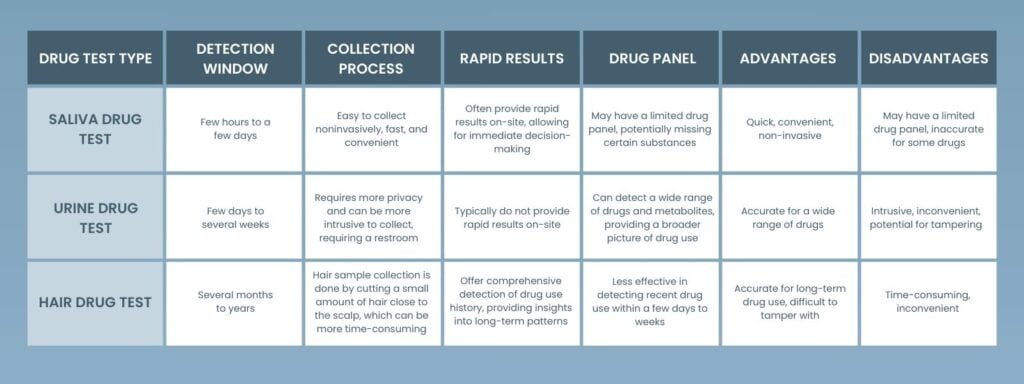
Compared to urine or hair tests, a saliva drug test offers a unique set of advantages and limitations. Saliva tests are quick and non-invasive, providing immediate results within a shorter detection window, making them ideal for on-the-spot assessments. In contrast, urine tests have a longer detection window and can identify a wider range of substances, but they may raise privacy concerns and have a higher potential for tampering. Hair tests, while capable of providing comprehensive historical data over several months or years, are less effective at detecting recent drug use. For a detailed comparison of these testing methods, please refer to the table below.
| Feature | Saliva Drug Tests | Urine Drug Tests | Hair Drug Tests |
| Detection Window | Shorter (a few hours to a few days) | Longer (a few days to several weeks) | Longest (several months to years) |
| Collection Process | Easy, non-invasive, quick and convenient | More intrusive, requires privacy and restroom access | Time-consuming, involves cutting hair close to the scalp |
| Results Speed | Rapid, onsite results for immediate decision-making | Results may take longer to process | Results may take longer to process |
| Drug Panel | Limited panel, may miss certain substances | Comprehensive, detects a wide range of drugs | Comprehensive, provides insights into long-term patterns |
| Cheating Concerns | Lower potential for cheating | Higher potential for cheating and tampering | Minimal cheating concerns, as hair cannot be easily substituted |
| Recent Use Detection | Effective for recent use | Effective for recent use | Less effective for recent use (a few days to weeks) |
Rediscover Life at Valley Spring Recovery Center
Get the compassionate support you deserve. We're here to help you reclaim joy, wellness, and a brighter future.
Verify Benefits
Can Medications Affect Saliva Drug Test Results?
Yes, medications can affect saliva drug test results. Certain medications may cross-react with the test, leading to false-positive results for specific drugs. It’s important to inform the testing facility about any medications you are taking to ensure an accurate interpretation of the test results and to rule out any potential interference from medications.
Can Alcohol Be Detected in A Saliva Drug Test?
Alcohol can be detected in saliva, but saliva drug tests are primarily designed to detect drugs of abuse and typically focus on illicit substances. While alcohol may be present in saliva, it is not usually included in standard saliva drug tests. Alcohol testing generally requires a separate method, such as a breathalyzer or blood tests, which are specifically designed to measure blood alcohol concentration (BAC).
How Does a Saliva Drug Test Work?
A saliva drug test works by collecting a sample of saliva from the individual using a swab or collection device. The sample is then analyzed for the presence of drugs, typically using immunoassay or chromatography techniques.
Are you covered for treatment?
Valley Spring Recovery Center is an approved provider for Blue Cross Blue Shield and Cigna, while also accepting many other major insurance carriers.
Check Coverage Now!Can Saliva Drug Tests Detect Drug Impairment?
Saliva drug tests can detect drug presence in the body, but they do not directly measure drug impairment. Additional assessments, such as clinical evaluations or field sobriety tests, may be needed to determine impairment.
What Are the Benefits and Limitations of Using the Saliva Drug Test in Comparison to The Alcohol, Smoking, and Substance Involvement Screening Test (ASSIST)?
The benefits and limitations of using the Saliva Drug Test in comparison to the Alcohol, Smoking, and Substance Involvement Screening Test (ASSIST) highlight the distinct roles these assessments play in substance use evaluation. The Saliva Drug Test provides rapid, non-invasive detection of recent drug use, making it particularly useful for immediate screening in settings such as workplaces or roadside checks. However, it primarily reflects short-term use and may not capture long-term patterns or dependence. In contrast, the ASSIST is a comprehensive screening tool developed by the World Health Organization that evaluates risky substance use across multiple categories, including alcohol and tobacco. While it does not provide immediate biological evidence, it effectively identifies individuals who may require intervention for substance use disorders.
For a detailed comparison of the benefits and limitations of these two testing methods, please refer to the table below.
| Criteria | Saliva Drug Test | ASSIST |
| Type of Test | Biological test | Questionnaire |
| Detection Method | Detects recent drug use through saliva samples | Assesses substance use patterns through self-reported data |
| Speed of Results | Provides quick results, often within minutes | Results depend on the time taken to complete the questionnaire and analyze responses |
| Invasiveness | Non-invasive and easy to administer | Non-invasive, as it relies on self-reporting |
| Substances Detected | Primarily detects specific drugs (e.g., THC, cocaine, opiates) | Screens for a wide range of substances, including alcohol, tobacco, and various drugs |
| Time Frame of Detection | Indicates recent use (typically within the last few hours to days) | Assesses patterns of use over a longer period, providing insight into potential dependence |
| Use Cases | Useful for immediate screening in workplaces, roadside checks, or legal situations | Valuable for identifying individuals at risk for substance use disorders and guiding interventions |
| Limitations | May not indicate long-term use or dependence; limited to specific substances | Does not provide immediate biological evidence; relies on honesty and accuracy of self-reporting |
| Comprehensiveness | Limited to recent use; does not assess frequency or consequences of use | Comprehensive assessment of substance use frequency, quantity, and consequences |
How reliable are Saliva Drug Tests for detecting various substances, and what factors can affect their accuracy?
Saliva Drug Tests are generally reliable for detecting a range of substances, including marijuana, cocaine, amphetamines, opioids, and benzodiazepines. Their accuracy can be influenced by several factors, such as the specific testing device used, the timing of the test relative to substance use, and the presence of contaminants in the mouth. Saliva tests are most effective at detecting recent drug use, typically within the past 24 to 48 hours. Factors such as eating, drinking, or smoking shortly before the test can affect the concentration of drugs in the saliva and, consequently, the test results. Proper administration and adherence to testing guidelines are crucial to ensure the reliability of saliva drug tests
Did you know most health insurance plans cover substance use disorder treatment? Check your coverage online now.
How Long Does It Take to Get Saliva Drug Test Results?
Saliva drug test results can be obtained within minutes to a few hours, as these tests often provide rapid, onsite results. However, if the test samples need to be sent to a laboratory for analysis, it may take a few days to receive the final results. The exact turnaround time will depend on the testing method, laboratory processing times, and other logistical factors involved in the testing process.
How does the Saliva Drug Test compare to the NIDA Drug Use Screening Tool in detecting Substance Use?
The Saliva Drug Test and the NIDA Drug Use Screening Tool serve different purposes in detecting substance use. The Saliva Drug Test is a biological test that detects the presence of drugs in an individual’s oral fluid, providing real-time information about recent drug use. It is non-invasive, easy to administer, and offers quick results, making it ideal for on-the-spot testing in workplaces or law enforcement settings. In contrast, the NIDA Drug Use Screening Tool is a questionnaire-based assessment that evaluates an individual’s drug use patterns and related behaviors over time. While it does not provide immediate biological evidence of drug use, it helps identify individuals at risk for substance use disorders and guides further assessment and intervention.
Can saliva drug tests be cheated or tampered with?
Saliva drug tests are difficult to cheat or tamper with compared to urine tests. The collection process is directly observed by a test administrator, reducing the opportunity for adulteration or substitution of the sample. However, it is still possible for individuals to try to manipulate the results by various means, such as using adulterants or abstaining from drug use for a short period before the test. Test administrators and laboratories take measures to detect and prevent such attempts, but no testing method is entirely immune to potential manipulation.
Share This Post


